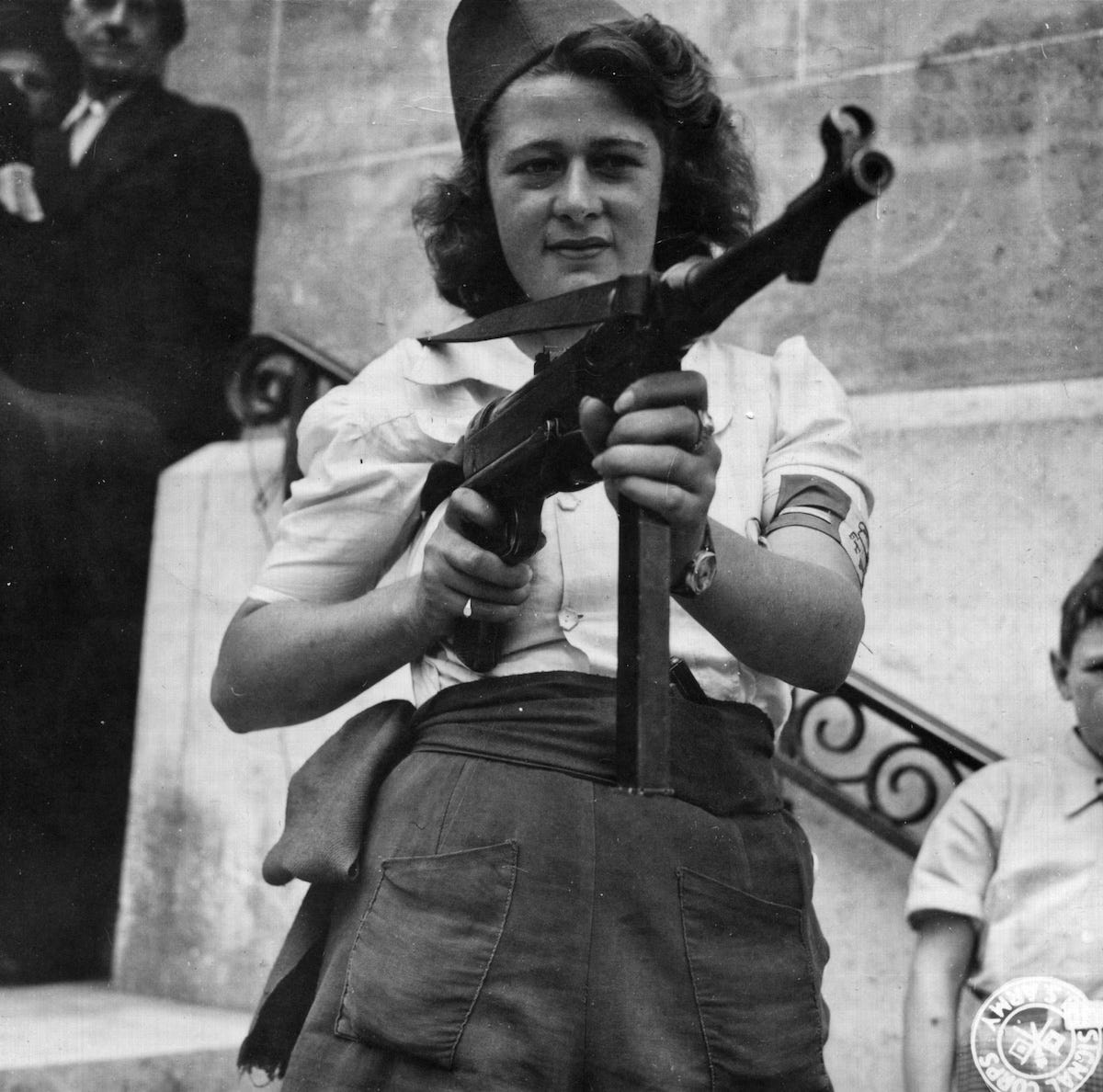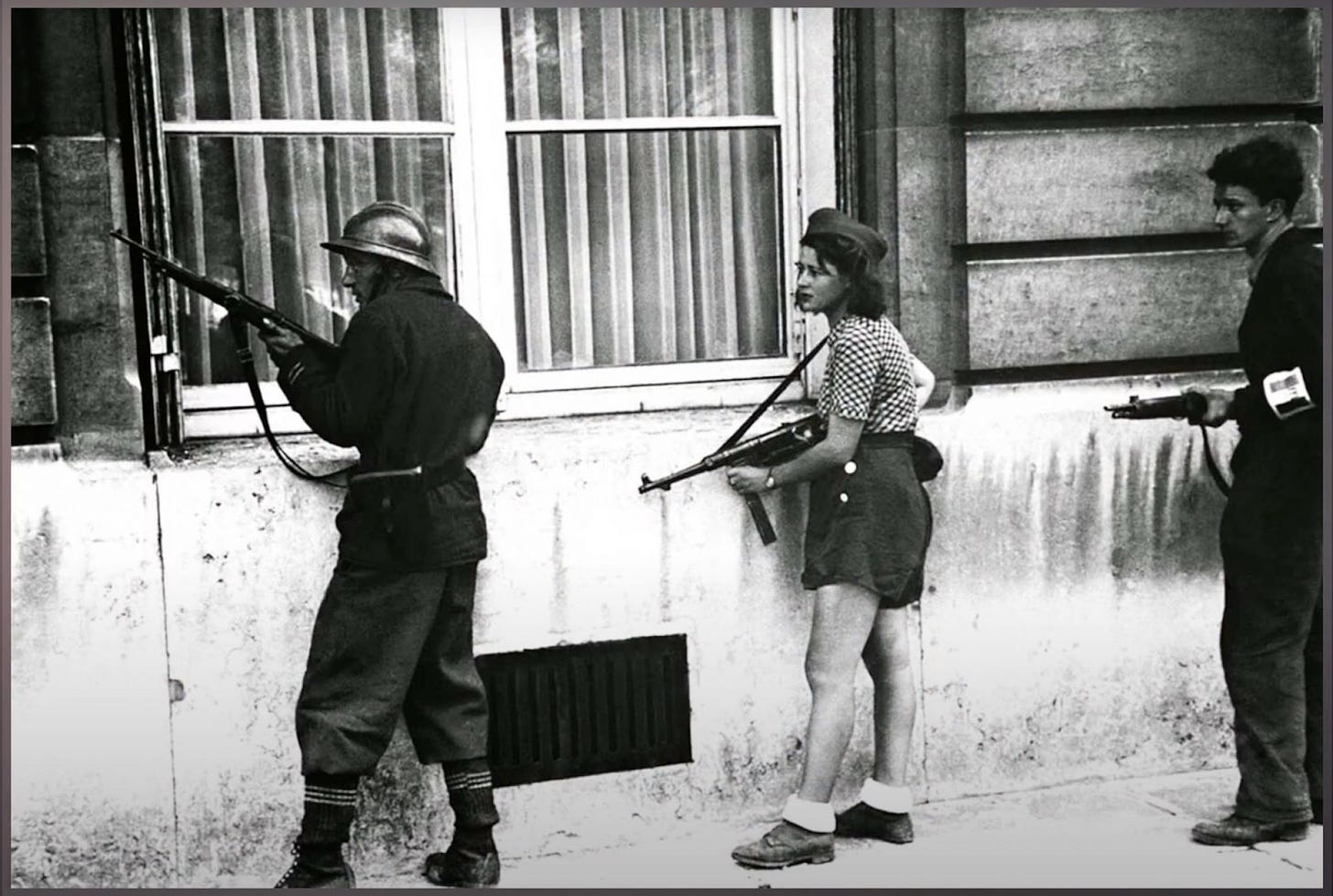SIMONE SEGOUIN, FAMED FRENCH RESISTANCE FIGHTER, DIES AT 97
She was an oddity, an enigma to Life magazine war correspondent Jack Belden. Covering the news from the French city of Chartres in August 1944 with soldiers from Gen. George S. Patton’s Third Army, this woman stood out from the pulsating crowd, jeering at those having their heads shorn for consorting with the Germans.
In his September 4, 1944, article titled “The Girl Partisan of Chartres,” the veteran correspondent described Nicole Minet (her nom de guerre) in adulatory terms:
Her blonde hair fell over a sun-browned face in a careless disarray and this, with her full lips and a rather sultry expression gave to her obviously young face the appearance of a charming hoyden. She was clad in a light-brown jacket and a cheap flowered skirt in many hues which ended just above her knees. Her legs were bare and brown. About her arm went a ribband bearing the legend FTPF [Francs-Tireurs et Partisans Français]. In the waistband of her skirt was stuck a small revolver.
The “charming hoyden” consented to an interview with Belden but was quickly whisked away by fellow partisans.
Thankfully for Belden, and for history, the two bumped into one another the following day.
The 18-year-old, later identified as Simone Segouin, was captured in film by famed wartime photographer Robert Capa during the Liberation of Paris on August 29th, 1944. The image of Segouin holding an MP-40 submachine gun all the while in shorts, a checkered shirt and a beret — led her to become the face of the French Resistance during the Second World War.
And while the female resistance fighter’s bravery and partisan actions is legendary in itself, the iconic photograph came to symbolize the hodge-podge nature of the French Partisans and how a simple French country girl could wreak havoc on the Goliath that was Nazi Germany.

The then 17-year-old was discovered in March 1944 by Lieut. Roland, a former engineer in the merchant marines before the war. Roland soon became chief of a group of 40 men operating near Eure-et-Loir and recognized the need for a girl or woman to do liaison work for, as Belden writes, “they can often get places where a man might be suspect.”
“I studied her for a while to see what were her feelings,” Roland relayed to Belden. “When I discovered she had French feelings I told her little by little about the work I was doing. I asked her if she would be scared to do such work. She said, ‘No. It would please me to kill Boche [a derogatory French word for German soldiers].’”
According to The Washington Post, Segouin and Boursier worked together for months, blowing up bridges and derailing trains carrying German troops or munitions. The teenager exchanged messages with other resistance members on a German bicycle she had stolen and repainted. The bike, which she called her “reconnaissance vehicle,” was filled with baguettes and allowed for blonde-haired innocent-looking Seqouin to move about German-occupied territory without suspicion.
While working in such close proximity to one another, and although he was 20 years her senior, Segouin and Boursier became lovers. Although never marrying the two would have six children together before splitting in the mid 1950s.
For her wartime actions, she was promoted to lieutenant in 1946 and, along with other resistance fighters, was awarded the prestigious Croix de Guerre.
“Nothing pleased Nicole so much as the killing of the Germans,” Belden wrote. “I could find no traces of what is conventionally called toughness in Nicole. After routine farm life, she finds her present job thrilling and exhilarating. Now that the war is passing beyond her own home district she does not think of going back to the farm. She wants to go with the Partisans and help free the rest of France.”
She went on to do just that.




